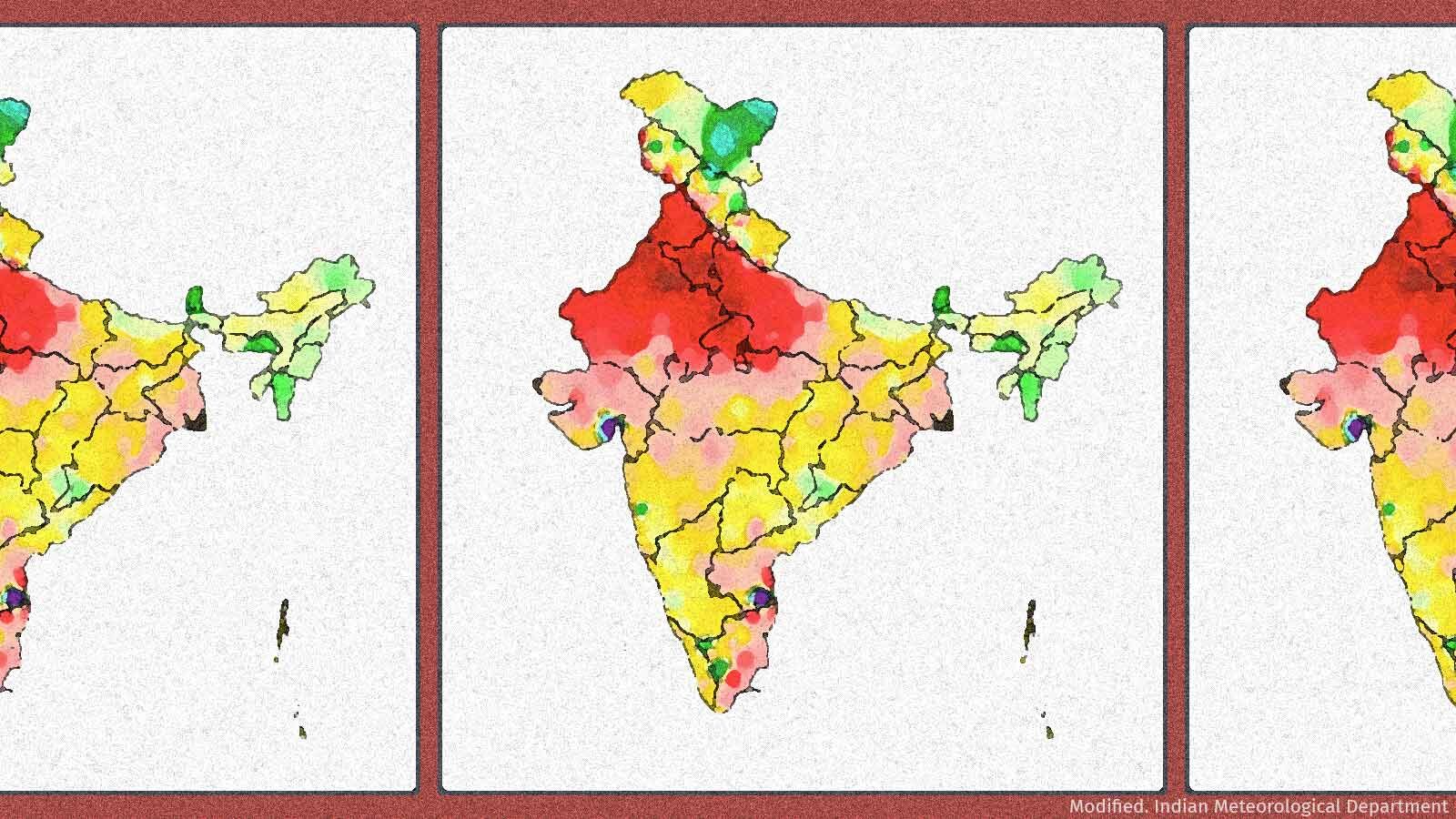Explained: What Is 'Wet Bulb Temperature'
Not just high heat, even relatively low temperature with high humidity could be extremely uncomfortable for humans.

Bengaluru: Delhi, on July 1, 2021, experienced a heatwave, and the maximum temperature rose to 43.5 degrees Celsius, data from the India Meteorological Department (IMD) at the Safdarjung Observatory show. On July 1, Ganganagar, in west Rajasthan, reported India's highest temperature of 44.5° Celsius (°C).
Some pockets of Punjab, Haryana, Chandigarh, Delhi, north Rajasthan and west Uttar Pradesh are likely to continue to face heat wave conditions, according to an all India weather forecast bulletin by the IMD on July 2.
But the world is not only getting hotter but also more humid, says a 2017 study, and in vast parts of India, humidity combined with heat is deadlier for human health and wellbeing.
This combined scientific measure of heat and humidity is called the 'wet bulb temperature', which can be high even when the temperature is relatively low. For instance, if the temperature is 30°C and relative humidity is 90%, the wet bulb temperature amounts to a very uncomfortable 29°C, as per this calculator, we reported in August 2017.
Spatial Distribution of Highest Daily Maximum Wet-Bulb Temperature, 1979-2015
Source: Science Advances
Physical labour--such as on farms, where 48.8% of Indians work--becomes unsafe in such conditions, and can prove fatal.
But the IMD continues to only track temperatures rather than wet bulb temperatures for its predictions and advisories. The latter is a more accurate "measure and depiction of the impact of heat on the human body", said Chandra Bhushan, the president and chief executive officer of the International Forum for Environment, Sustainability and Technology (iFOREST), a New Delhi-based think-tank. IMD's current approach is insufficient to capture heat stress, he explained.
Why is this important?
The current heatwave is likely to impact six northern Indian states and union territories, the IMD said.
Heat Wave Warning In India Until July 6
Source: IMD
Heat waves, when temperatures reach 40°C or more, could cause 'moderate' health concerns for vulnerable people, such as infants, the elderly and people with chronic diseases, the IMD said. But much lower wet bulb temperatures, between 29°C and 31°C, can also cause deaths, the 2017 study said. If the wet bulb temperature exceeds the human body's skin temperature of around 35°C, perspiration can no longer act as a cooling mechanism and the body will quickly overheat, which can result in death.
"Wet Bulb Temperatures approaching 35°C almost never occur in the current climate, and thus there is little real-world data on human health outcomes," the December 2017 study said.
Heatwaves caused at least 6,167 deaths across India between 2010 and 2018. Of that, 34% or 2,081 deaths were reported in 2015, the year with the deadliest heat waves, we wrote in June 2020. If the effect of wet bulb temperatures are taken into account, the impact is likely to be larger and more serious, we reported in January 2018. "The poor, those with outdoor jobs, cardiovascular and respiratory conditions are likely to be the most vulnerable. High temperatures could even give rise to new diseases", we wrote.
How to mitigate effects of high temperature+humidity
India needs a 'heat code' for cities and states that will account for both heat and humidity, while discussing heatwaves, said Bhushan. India also needs to implement district-level heat action plans and build infrastructure that will support people and workers, he added. Current central government efforts to develop heat action plans are inadequate; only a few municipalities and state governments have developed plans to identify high-risk communities and issue heatwave alerts, he added.
If the government declares heat waves as a national disaster, governments will earmark resources and support for the people affected. The National or State Disaster Response Funds could be used to build resilience, Bhushan suggested.
We welcome feedback. Please write to respond@indiaspend.org. We reserve the right to edit responses for language and grammar.


